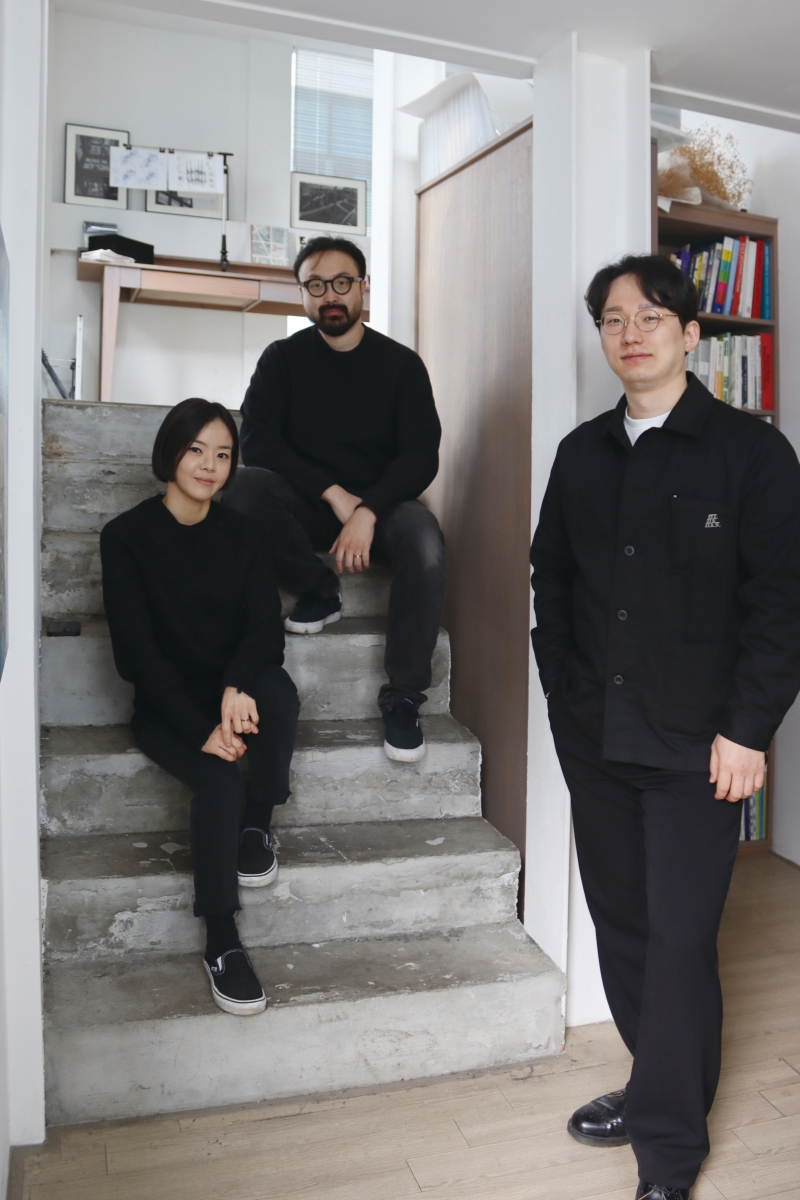SPACE April 2023 (No. 665)
ʻI am an Architectʼ was planned to meet young architects who seek their own architecture in a variety of materials and methods. What do they like, explore, and worry about? SPACE is going to discover individual characteristics of them rather than group them into a single category. The relay interview continues when the architect who participated in the conversation calls another architect in the next turn.
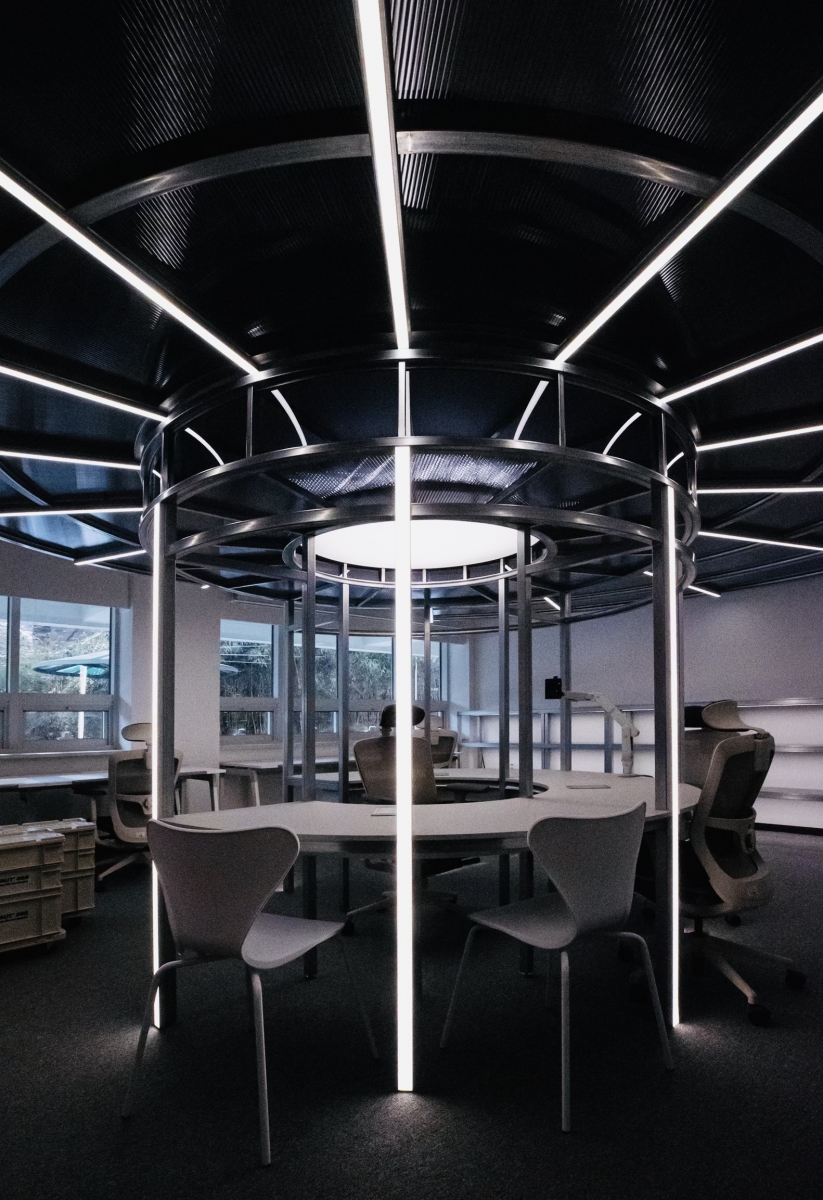
42 Seoul Renovation project / ⓒA-Axis Architects
interview So Hancheol, Lee Agos Donguk, Lee Jihyun co-principals, A-Axis Architects × Youn Yaelim
An Intersection Rather than a Subset
Youn Yaelim: We can’t talk about A-Axis Architects (hereinafter AAA) without mentioning IVAAIU City (hereinafter IVAAIU). IVAAIU is a design collective founded in 2013 and currently has five members, including Lee Agos Donguk and So Hancheol.
So Hancheol: While IVAAIU works on multidisciplinary projects such as futuristic urban design, architectural prototyping, installation art, and audio-visual performance, AAA specialises in architecture. Architecture is a multidisciplinary art but also a field with huge responsibilities and institutions. At the end of 2020, I became a licensed architect and opened AAA.
Youn Yaelim: IVAAIU is an acronym for six words, from ‘idea’ to ‘urbanism’. It reads I-V-A-A-I-U City. Is that what you call it when you speak to each other?
Lee Jihyun: Of course. Itʼs easier to pronounce than one might expect.
Lee Agos Donguk: In a meeting the other day, I heard that Hyundai Moter Group has a rule that names should not exceed ten syllables. So, I counted, and realised that IVAAIU is only eleven letters long (when spelt in Korean). Not as long as you think!
Youn Yaelim: Does the order have a relevance or meaning?
Lee Agos Donguk: Itʼs a natural extension of our senses. When I brood over the words that start with an individual ʻideaʼ, then move to ʻvisualʼ, ʻaudioʼ, ʻarchitectureʼ, ʻinfrastructureʼ, and finally to the ʻurbanismʼ environment that brings it all together, I feel like Iʼm travelling through six media forms. Weʼre sticking with this name to spark that kind of imaginative journey.
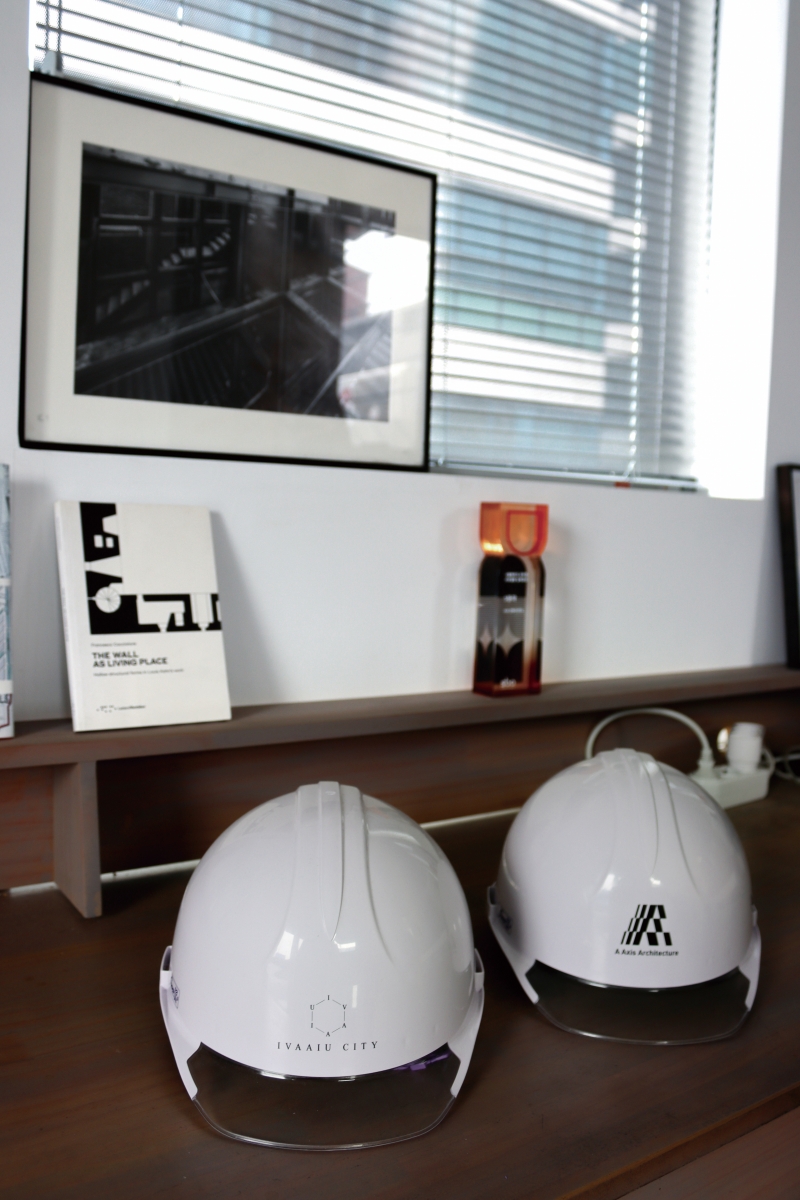
Office of A-Axis Architects
Youn Yaelim: AAA focuses on A (architecture) of all the six media.
Lee Agos Donguk: While IVAAIU is the foundation, AAA is an extension of IVAAIU rather than a spin-off. By the way, A has expanded to three meanings! (laugh) AAA stands for ʻaligned axisʼ and ʻanother axisʼin architecture. We are trying to keep up with societal progress and to develop new ideas. In that sense, it is connected to IVAAIU, but acts as an independent entity.
Youn Yaelim: It could be considered an intersection, and not a subset. Tell me about how these two groups influence one another.
Lee Jihyun: We can work on projects independently and then collaborate when we discover common traits. Some members may not have studied architecture, but weʼre all good at what we do. Sometimes the two groups work together on research during the conception phase, and then the AAA takes over during the primary or conceptual design phase to make it a reality.
Lee Agos Donguk: On the other hand, things like design competitions are often run by the AAA alone. Depending on the nature of the project, we devise our own structure.
Youn Yaelim: How did Jihyun get involved with AAA, as you are not a member of IVAAIU?
Lee Jihyun: I have been studying architecture and design in the UK. I knew Donguk through an architecture club I joined when I was in Korea for a while on leave. We were both students, and it was over 10 years ago. But when I returned to Seoul in 2019, due to the pandemic, and settled down, he was the only person around me who was still working in architecture.
Lee Agos Donguk: The timing of Jihyunʼs arrival in Korea coincided, so I naturally suggested she join. Jihyun is also a British architect, so we plan to work with AAA in Seoul and the UK.
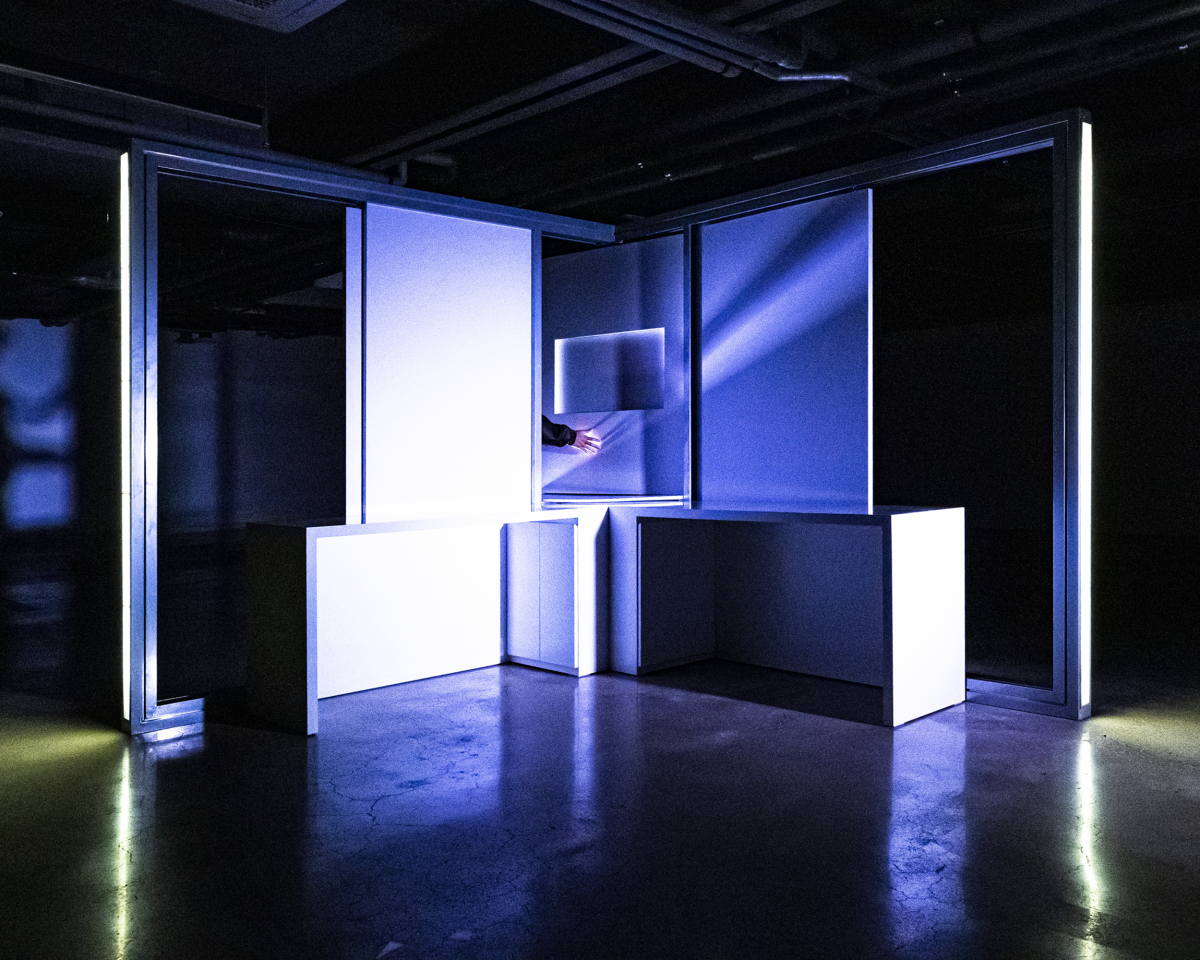
42 Seoul Renovation project prototyping / ⓒA-Axis Architects
If Something is Different, Do It Differently
Youn Yaelim: The 42 Seoul Renovation project (2022) was conceived together with IVAAIU. I noticed this when I saw the formal chracteristics and lighting design in the space.
Lee Jihyun: Right. The project was about distributing two limited spaces across two different hierarchical areas for students and staff. 42 Seoulʼs curriculum emphasises independent learning, so it was a place where information exchange and communication happened on many scales. The module designed in collaboration with IVAAIU and AAA helped to spatially unpack that need.
Lee Agos Donguk: 42 Seoul is a software academy founded by benchmarking the French institution École 42. Even though it was a government institution, the way it was taught and the lifestyle of the students was different from a typical educational institution. As we tried to create a space to
fit the new pattern, we naturally needed a different formative vocabulary, which works well with 42 Seoulʼs visual form and identity.
So Hancheol: The previous space didnʼt reflect those characteristics, with a one-size-fits-all space shape and standardised furniture.
Lee Agos Donguk: In fact, they seem to have their own special behavioural patterns that I donʼt understand. So, we interviewed all the students and staff. We created a 3D mock-up and let them independently try out the layout and lighting controls. When I saw the data collected, things like how they use computers and the placement patterns of devices were utterly new to me, and those things became essential elements in the design of the space, the furniture, and the lighting.
Youn Yaelim: You recently won the design competition for the Namyang 119 Fire House and working on it at present.
So Hancheol: The 119 Fire House was one of the programmes we wanted to try because it was such a vital space for its users, and there were safety challenges to solve. After applying for every design competition for the 119 Fire House, we won at the third attempt. I think the main winning factor was the façade design. Jihyun took the lead in designing it. Inwardly, I was concerned it was
too radical an approach.
Lee Agos Donguk: We have to go to work tomorrow because of that façade! (laugh) At the judging phase, the façade was an essential factor, but the simplicity of the plan from a user perspective was highly appreciated.
So Hancheol: My cousin is a firefighter. So, for the third competition, I asked him for his input. It was like getting advice from real users.
Lee Jihyun: We designed the same programme three times and felt that the second time was much better than the first, while the third was much better. It was selected when the superfluous elements had been filtered out and only the core principles remained.
Youn Yaelim: It turns out the two rejections weren’t for nothing.
So Hancheol: There was an architectural guideline for the 119 Fire House. It recommended the suitable finishes, suggested the form of the doorway, and so on. Whereas, in the past, we had designed it with an active reflection of those recommendations, this time we worked more freely. I think it actually made the judges question why the 119 Fire House in Gyeonggi Province always had the same image.
Lee Jihyun: When we started AAA, there was an idea of working on design competitions. Iʼve done them a few times, and I find them to be fun and liberating. Rather than trying to meet the guidelines, just because it’s a public contest, I think better results emerge if we create under the mindset of ʻjust do itʼ. We are going to keep doing it.
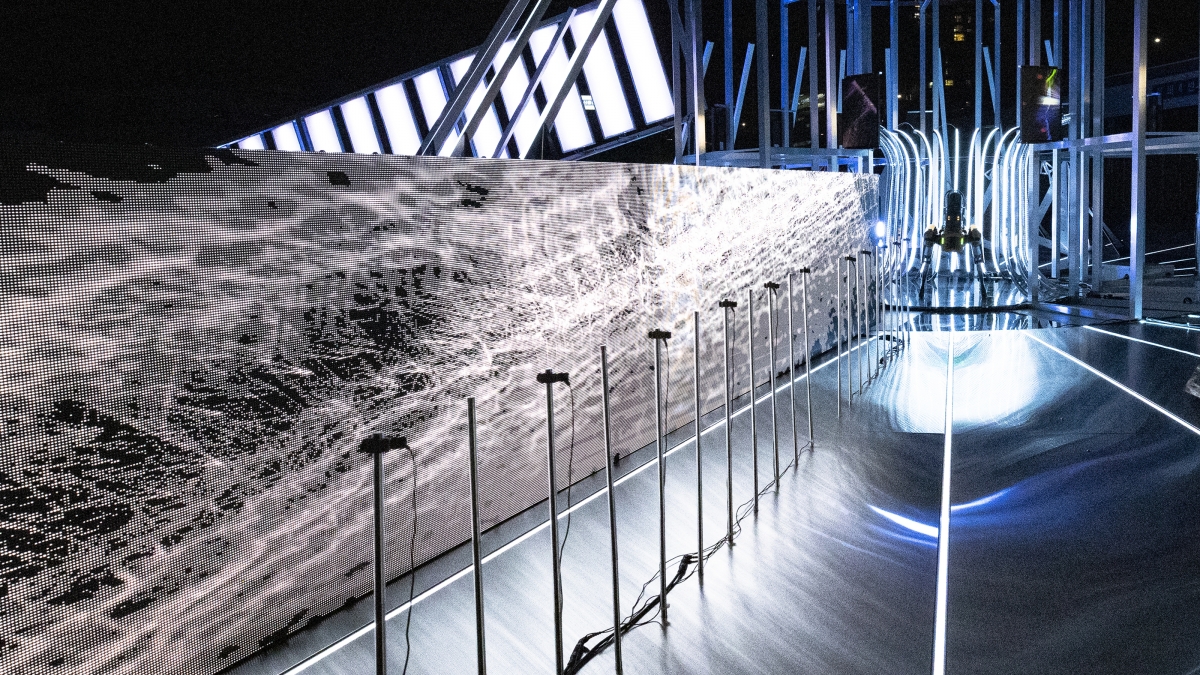
Rotating and Revolving
Youn Yaelim: What other projects are you working on?
Lee Agos Donguk: We are developing architectural prototypes for robot-human coexistence in cities in Korea and the UK. IVAAIU had been exploring and experimenting with a future city that coexists with robot technology for several years. Itʼs something we started out thinking would be pretty far off in the future. But the prototype we are working on is on the verge of being patented.
Lee Jihyun: To explain further, weʼre transforming old London housing types into those for a futuristic city that coexists with robots. Interestingly, this housing type has historically been used as a stable form and then changed hands once times turned towards better security for citizens. We can take this one step further and say that it will now be a space for humans and robots in the future.
So Hancheol: Similarly, in Korea, we are exploring new possibilities for a hanok. The yard of a hanok holds promise as a space for robots.
Youn Yaelim: Why do you think architects need to do this research?
Lee Jihyun: Ten years ago, as an architecture student, I was thinking about building with technology, but I imagined it would be a long time before it became a reality. But a lot of it is already happening. Architecture has been around for a long time, but itʼs not a fast-moving discipline. However, the modern world demands fast-paced change. As technology cycles get shorter and shorter, there may come the point where the gap between technology and architecture is no longer bridged. This means that we might not be able to suggest the most appropriate architecture or city to go with it. Thatʼs why we continue to work at the intersection of technology and architecture, even if itʼs disconnected from the immediate reality.
Lee Agos Donguk: Chronologically, IVAAIU is a few steps ahead of AAA because it explores ideas that have yet to be polished into architectural form. AAA does what it can architecturally solve at this point in time. But nowadays, technology and societal change are moving so fast that what we imagined to be a long way off is coming to life much sooner. The same goes for robots. Robots differ from traditional transport systems because they donʼt end on the road; they cross thresholds
and enter living spaces. So, if architecture isnʼt up to speed on this, thereʼs going to be a lot of trial and error. Architects need to think about how humans and robots will coexist.
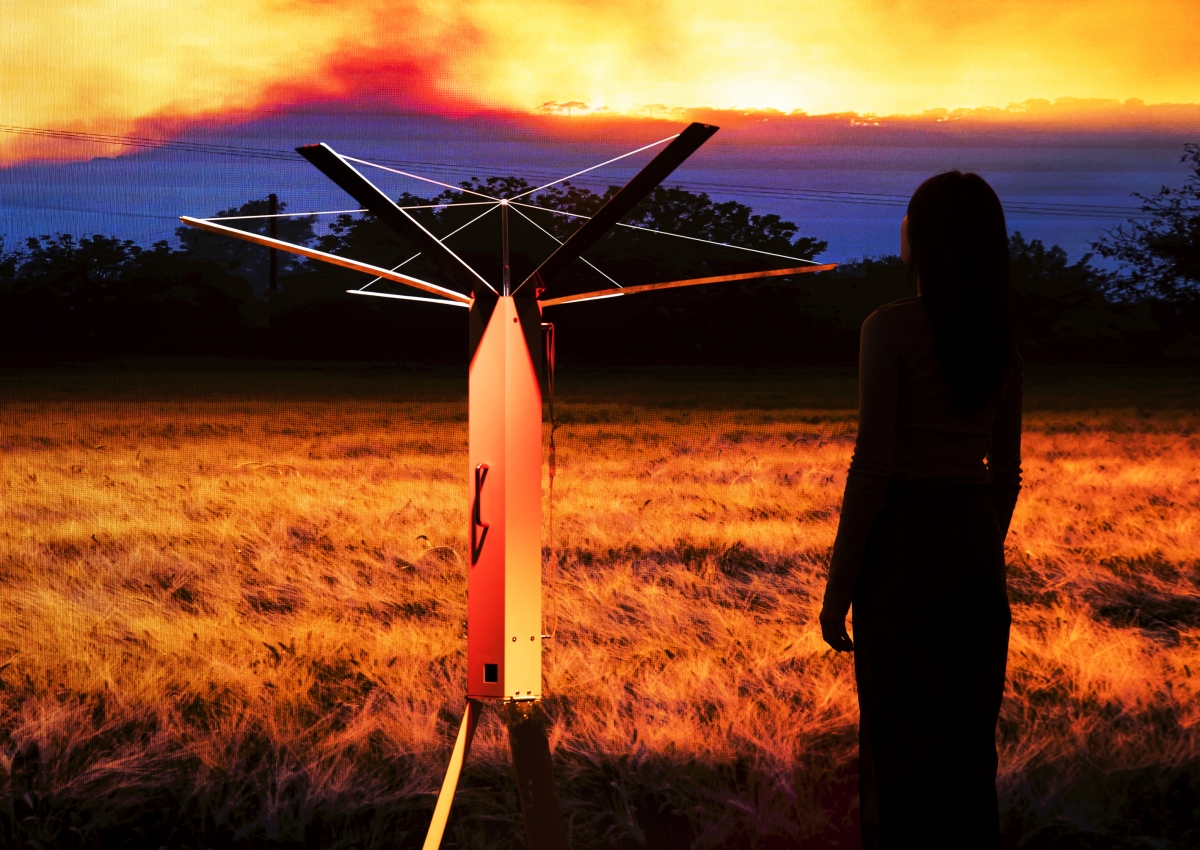
ESC 1 (2023), SSALT_IN, solar technology module project prototype / ⓒIVAAIU City
Youn Yaelim: But you can’t leave the present behind and only do research aimed at the future. How do you balance the two points of view?
Lee Jihyun: There will come a time when todayʼs more viable architectural projects and futuristic themes will be on the same page. But, weʼre still at the experimental phase and have more questions than answers. Itʼs always a question of how far we can draw our experiments into our architecture and how far existing architecture can accommodate them. Itʼs natural for clients to see what they need here and now, and you canʼt train them to see a future value that may never arrive. That said, we donʼt stop because we know that just as what we imagined ten years ago is now quickly becoming a reality, the future weʼre imagining now is definitely on the near horizon. Maybe one day soon weʼll find the answer.
So Hancheol: If you only focus on the architecture of the present, youʼll miss a lot of projected change. We are building a sense of urgency to see the changes we might otherwise miss.
So Hancheol, Lee Agos Donguk, Lee Jihyun, our interviewees, want to be shared some stories from Ki Jun Kim (principal, Atelier KI JUN KIM) in June 2023 issue.
